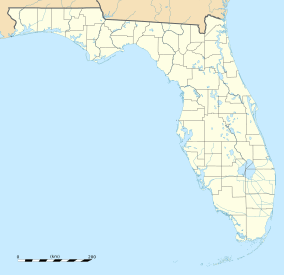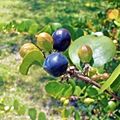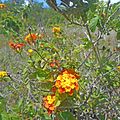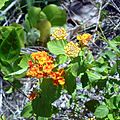Oleta River State Park facts for kids
Quick facts for kids Oleta River State Park |
|
|---|---|
|
IUCN Category IV (Habitat/Species Management Area)
|
|
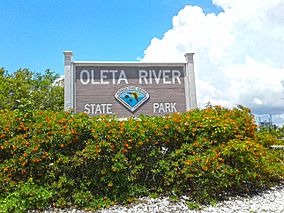
Entrance sign to Oleta River State Park
|
|
| Location | North Miami, Miami, Florida, United States |
| Area | 1,043 acres (4.22 km2) |
| Created | 1986 |
| Governing body | Florida State Parks |
| Website | Oleta River State Park |
The Oleta River State Park is a huge park in Florida, covering about 1,043 acres. It's located right on Biscayne Bay in North Miami, near the big city of Miami. This park is special because it has one of the largest groups of Casuarina trees, also known as Australian 'pine'. These trees are considered an invasive species in Florida, meaning they aren't native and can sometimes take over.
Discovering Oleta River State Park
The most important part of this park is the mouth of the Oleta River. The park is even named after it! People have lived near this river for a very long time, since about 500 B.C. Back then, Tequesta Native Americans used the river banks as a place to camp.
A River's History
Later, in 1841, U.S. troops used the river during the Second Seminole War. They called it Big Snake Creek. In 1881, a Navy Captain named William Hawkins Fulford explored the river further inland. As more people moved to the area in the 1890s, the name of the river was changed from Big Snake Creek to the Oleta River in 1922.
Fun Activities at the Park
Even though the Oleta River doesn't flow all the way to the Everglades anymore, it's still a super popular spot for canoeing. The park is also famous for having some of the best mountain biking trails in the country! Many triathlons and other exciting sports events happen here.
You can also relax on the beach along Biscayne Bay. If you want to get out on the water, you can rent kayaks. For those who love camping, there are even simple cabins available. Oleta River State Park is also home to one of Florida's AmeriCorps chapters, where people volunteer to help keep the park amazing.
Gallery


